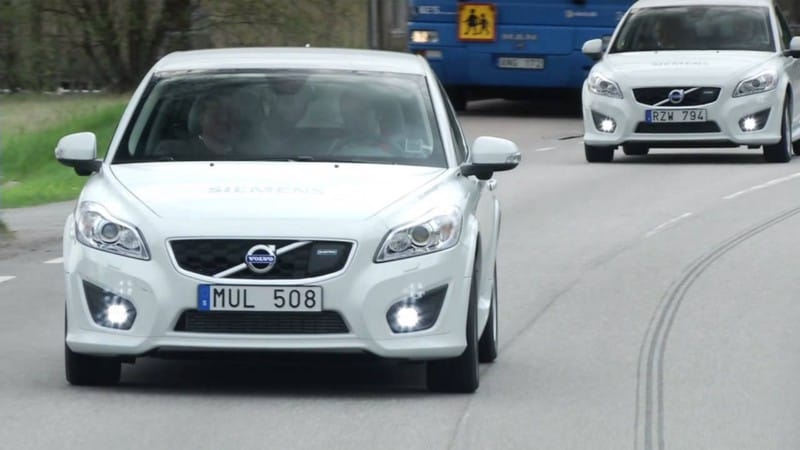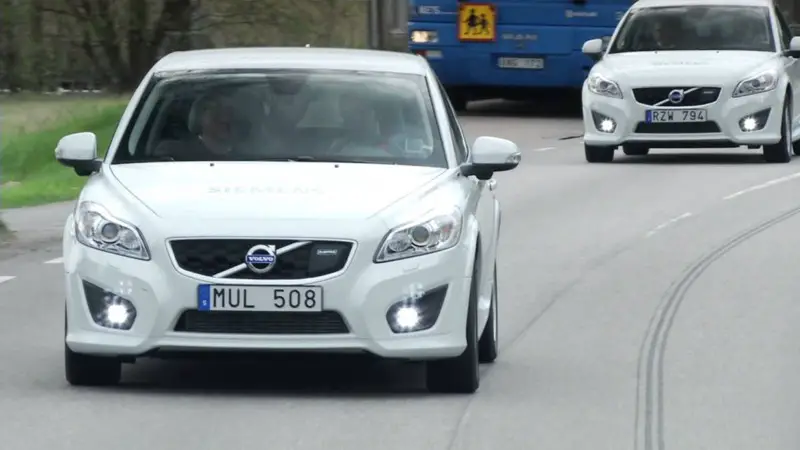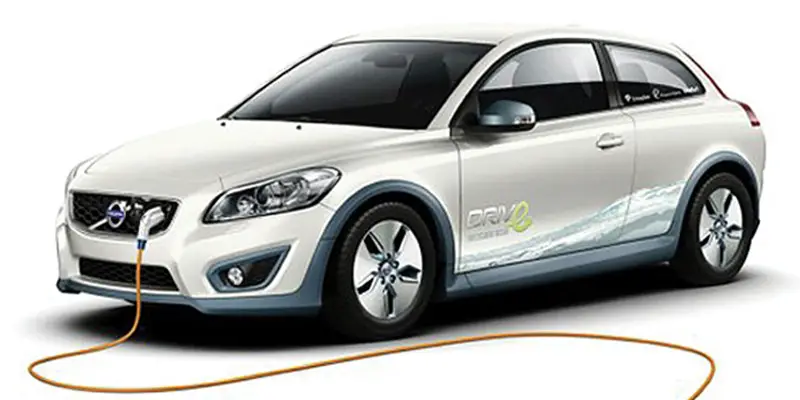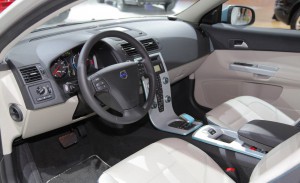Volvo C30 Electric
The stats for the Volvo C30 Electric sedan may seem unimpressive: a range of about 90 miles, acceleration from 0–60 mph in 11 seconds, a…


The stats for the Volvo C30 Electric sedan may seem unimpressive: a range of about 90 miles, acceleration from 0–60 mph in 11 seconds, a top speed of about 80 miles per hour, and a leisurely eight hours to recharge the 24 kilowatt-hour battery pack from 220-volt household outlet. But when it comes to performance and safety, Volvo is testing its plug-in prototypes perhaps harder and longer than anybody in the industry, before committing to producing their electric models.
The electric motor is mounted under the bonnet and drives the front wheels, emitting zero emissions and drawing 15 kWh of power for every 100km of travel from the two lithium-ion batteries, which are rated at 400 V and 24 kWh. Both are mounted low between the two axles, contributing to a vehicle weight distribution of 56 per cent front and 44 per cent rear. Volvo claims that the batteries can be charged fully from standard domestic power outlets within an eight-hour period.

The C30 Electric incorporates interesting features tailored for more extreme climates .There are two cabin heating systems, ensuring that the 150km range is available even in the coldest winter. Volvo considers the C30 Electric, which has 75 miles of range.
When you’re driving the C30 Electric, you can forget that it’s prohibitively expensive. Pulling away from a stop is gorgeous fun, even though the car doesn’t have amazing acceleration. Ambling from zero up to 100 kilometers per hour ( 0–62 miles per hour) in a modest 12 seconds thanks to a compact permanent magnet electric motor that provides 84 kW peak power (40 kW constant) and 110 hp. This is slower than the previous time of 10.5 seconds, since Volvo is still adjusting performance to maximize range. What’s interesting, though, is that 12 seconds doesn’t feel sluggish at all ,even on slight uphills, given the beautiful quiet and smooth acceleration of the electric drive.
When you get into the car, you feel comfortable. The car wraps itself around you in a very satisfying way and rear visibility is excellent. It’s not quite as easy to maneuver in reverse as a Smart ForTwo is (not many vehicles are), but it beats the pants off the Chevy Volt’s rear view. Looking forward, you see a little eco needle to tell you how “green” you’re driving (or not, as the case may be). In the city, the C30 should be an excellent performer (just ask anyone who owns the ICE version). The cabin is also well-crafted to be nice and quiet — not always an easy task for a company’s early EV — and there was no noticeable aural intrusion from the outside world; a common problem when you take the dirty and noisy ICE out from under hood. The weight of the battery pack is down low, which helps with handling.

The absolute best part of the way the C30 Electric moves, though, is the selectable coasting/regenerative braking option, similar to Volkswagen Golf Blue-e-motion. Aside from an interface issue, this is what we hope all EVs will evolve to in the future. The interface issue is that you need to double-click the shifter a lot. When you’re in D, you have to tap the shifter twice to get it to R (passing through N on the way). Same thing to go from R to D. You do this on any car with a standard shifter, but the C30 Electric has a Prius-like knob that requires you to go “click, click” to change directions.
The shifter works well once the car is in motion, though, and you want to engage highway (H) mode. To do so, you simply shift into drive again. This eliminates the car’s regenerative braking and allows you to coast to slow down. Sure, putting regenerative brake energy into the battery is cool, but it’s even cooler to just let the car slow down on its own, especially if you can time things so you don’t need to hit the brakes at all — which means you didn’t spend any unnecessary energy to move in the first place. If you’re already a careful non-hybrid ICE driver used to squeezing every mile out of your tank, you’ll feel right at home with the C30 in H mode. When you don’t want this easy coasting, you can shift back into standard D/regen mode, and this will act like you put your foot on the brake if it wasn’t already. The drive modes are efficient, driver-selectable and operate however you think an EV should. In short, this is an EV for the way we like to drive.
From the outside, the C30 BEV (Battery Electric Vehicle) looks identical to the low-emissions DRIVe version of the three-door. But under the bonnet, in place of an internal combustion engine, there is an electric motor and two lithium-ion battery packs. The 100 kg of extra weight that the batteries add currently sits over the front wheels, so this C30 feels nose heavy.
Price: £22,500




